Rich Table’s Spaghetti with Peas, Goat Cheese — And A Most Unexpected Ingredient
As I set this brimming bowl of pasta in front of my husband, he twirled in his fork, then took a bite.
“This is so weird,” he exclaimed with growing glee. “But it’s really good!”
That might just be your reaction, as well, to this eyebrow-raising spaghetti tossed with peas, lime, goat cheese — and are you ready for it — duck fat.
Yes, “Spaghetti with Peas, Lime, Goat Cheese, and Duck Fat” is from the cookbook, “Rich Table” (Chronicle Books, 2018), of which I received a review copy. It’s by husband-and-wife chef-owners Evan and Sarah Rich with assist from Eater Cities Director Carolyn Alburger.
If you’ve ever had the pleasure of dining at San Francisco’s Rich Table — where scoring a table is never an easy feat — you know that this type of dish is part and parcel for this Michelin-starred restaurant that has a knack for creating winning dishes with rather unexpected, and often mind-boggling combinations of ingredients.
The Riches, who also own the even more casual RT Rotisserie in San Francisco, have the kind of imagination to think of using Douglas fir to flavor loaves of levain, to thread whole sardines through potato chips, and to crown a dish of Indian lentils with a funnel cake.
This cookbook offers a glimpse into that originality with 85 recipes. It also offers some amusing insight into their lives, including how they moved from New York, and were so poor that the only thing in their tiny San Francisco apartment was a blow-up mattress to sleep on, which they promptly punctured the first time they tried to put air into it.
The food is equally breezy and fun. There are quite a few fairly easy recipes such as “Sugar Sanp Peas with Honey Mustard and Horseradish.” Others will offer more challenge, but you’ll learn some cool techniques along the way, such as “Sliced Halibut with Tokyo Turnips and Bone Marrow,” in which you have to render the marrow; “Douglas Fir Pierogi with Gouda and Chicory,” where you’ll have to make Douglas fir powder; and “Chicories with Date Vinaigrette and Crispy Chicken Skin,” in which you freeze the skin, grind it in a food processor then cook it on the stove-top until crisp.
This pasta is a deceptive dish. It looks for all the world like it is vegetarian. But of course, with the duck fat, it’s far cry from that. The Riches note that you can substitute unsalted butter instead to actually make the dish vegetarian. But really, it’s the duck fat that makes this dish so intriguing and unforgettable.
When spring arrives, you can use fresh peas in this dish. Since it’s still winter, I followed the Riches’ suggestion to use thawed, frozen peas instead. By doing so, you actually save a few steps, too, because you don’t make a pea stock. Instead, you just use water or vegetable stock.
Boil the spaghetti until al dente, then toss into a large skillet in which you’ve melted the duck fat. The noodles get completely coated. Stir in most of the peas, along with sauteed pea sprouts or baby spinach. The latter is what I used.
Ricotta mousse, which is just ricotta mixed with a little milk to lighten its texture, gets dabbed on the bottom of each serving bowl. Then, the hot, duck-fat coated spaghetti goes over top, its heat causing the ricotta mousse to get a little melty. The pasta gets garnished with some peas, smashed with fresh mint and olive oil; lime zest; and crumbles of goat cheese.
The mint, lime and peas give this dish a spring-like lightness. The goat cheese adds a lovely tang. And the duck fat is pure bliss, adding greater body and luxuriousness that you just don’t expect.
Yes, it’s head-scratching dish. But thinking out of the box has never tasted quite so divine.
Spaghetti with Peas, Lime, Goat Cheese, and Duck Fat
(Serves 4)
2 pounds English peas, in the shell (see Note)
1/2 yellow onion, peeled
12 cups water
8 ounces goat cheese
1/4 cup whole milk
3 tablespoons thinly sliced mint leaves
3 tablespoons lime juice, plus the zest of 1 lime
2 tablespoons extra-virgin olive oil
Salt
8 ounces pea shoots, tough stems removed, or baby spinach leaves
12 ounces dried spaghetti
1/4 cup duck fat (see Note)
Shell the peas and place the shells in a large pot. Reserve the peas. (You should have about 2 cups of peas.)
Add the onion half and 12 cups water to the pot with the pea shells. Bring to a boil over high heat. turn the heat down to medium-low and simmer for 15 minutes.
Remove the pot from the heat and let the stock cool to room temperature. Strain and discard the solids. Measure out 1 cup of the stock. Refrigerate or freeze the remaining stock for another use, such as vegetable soup.
Meanwhile, in a food processor, process 6 ounces (about 3/4 cup) of the goat cheese with the milk until smooth and fluffy, about 30 seconds.
Bring a large pot of salted water to a boil over high heat. Place the peas in a fine-mesh strainer and set the strainer in the boiling water. Blanch the peas until crisp-tender, 1 to 2 minutes. Remove the strainer and rinse the peas under cold water until cool. Set aside 1 2/3 cups of the peas for serving.
Keep the salted water hot.
In a medium bowl, coarsely mash the remaining 1/3 cup peas with a potato masher. Mix in 1 tablespoon of the mint, 1 tablespoon of the lime juice, half of the lime zest, and 1 tablespoon of the olive oil. Season with salt and set aside for serving.
Remove any curly tendrils or small leaves from the pea shoots and set aside for garnish.
Heat the remaining 1 tablespoon olive oil in a large skillet over medium heat. Add the pea shoots and cook, stirring occasionally, until wilted and tender, 1 to 3 minutes. Season with salt. Transfer to a cutting board, coarsely chop, and set aside. Wipe out the skillet.
Return the pot of salted water to a boil. Add the spaghetti and cook until not quite al dente, about 7 minutes. Drain immediately.
Melt the duck fat in the now-clean skillet over medium-high heat. Add the cooked pasta, the reserved blanched peas, and the wilted pea shoots. Toss to coat in the fat, and then add 1/2 cup of the pea stock. Bring to a rapid simmer and cook, stirring constantly, until a creamy sauce has formed around the pasta. Add additional stock as needed to make the sauce. Remove from the heat and stir in the remaining 2 tablespoons mint and remaining 2 tablespoons lime juice. Season with salt.
Divide the goat cheese mousse among four shallow serving bowls. Divide the pasta among the bowls, placing it on top of the goat cheese mousse. Crumble the remaining 2 ounces goat cheese in and around the pasta. Add a large scoop of the mashed pea mixture on top of the pasta. Garnish with the remaining lime zest and any reserved pea tendrils. Serve immediately.
Note: You can substitute 2 cups of thawed frozen peas for the English peas. If you do, use low-sodium store-bought vegetable broth instead of the pea stock. If you’d like to make the recipe vegetarian, use unsalted butter instead of the duck fat.
From “Rich Table” by Sarah and Evan Rich
More: A Visit to Rich Table

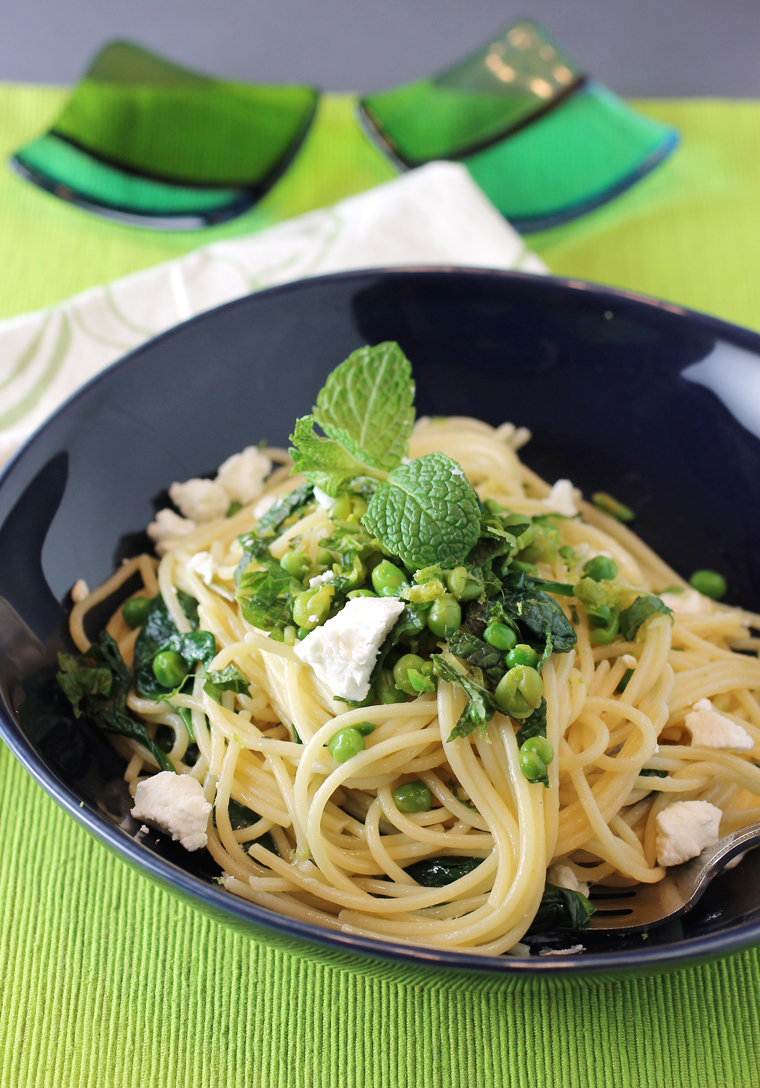
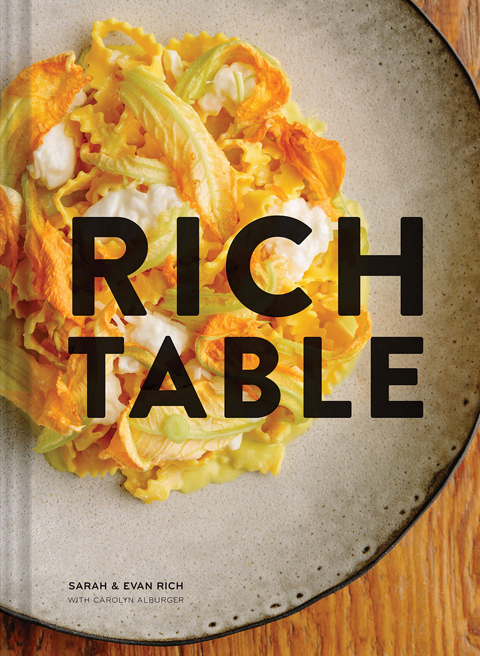
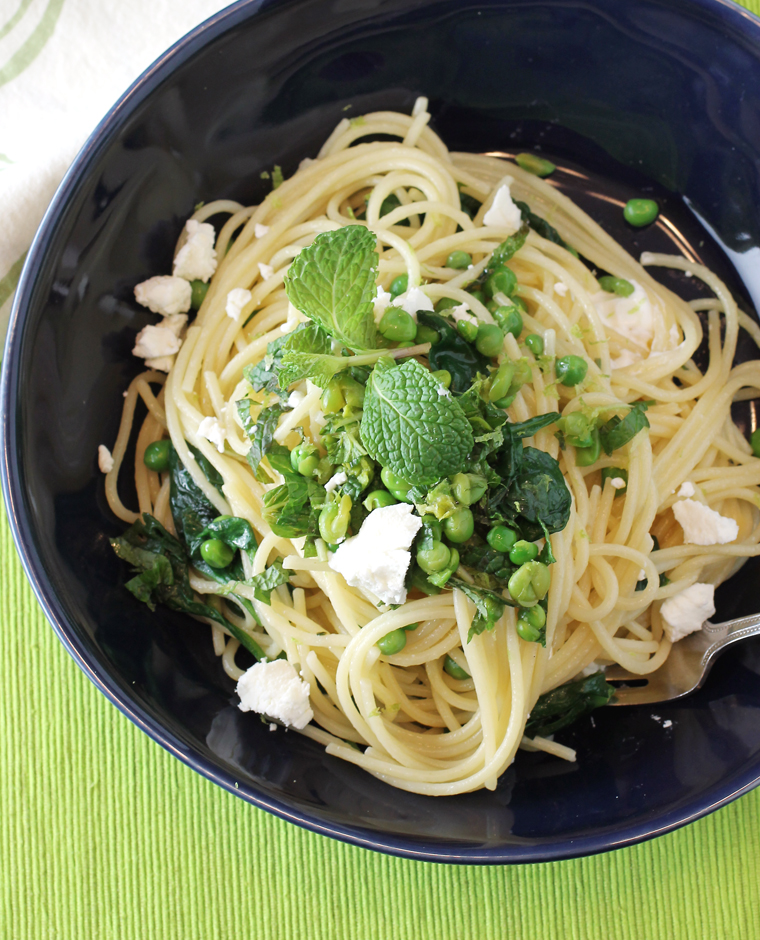
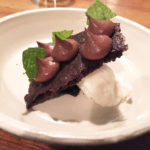
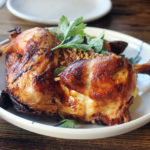
I love their pastas. And duck fat is great on almost everything!
I will have to make it! But will wait till the peas in my garden are ready!
Can’t wait for fresh peas to try this one! Pinned – I’d be honored if you shared it at our What’s for Dinner recipe party on the Lazy Gastronome!
http://www.lazygastronome.com/whats-for-dinner-sunday-link-up-186/
there’s something about peas and pasta that really does it for me! duck fat certainly doesn’t hurt either. 🙂